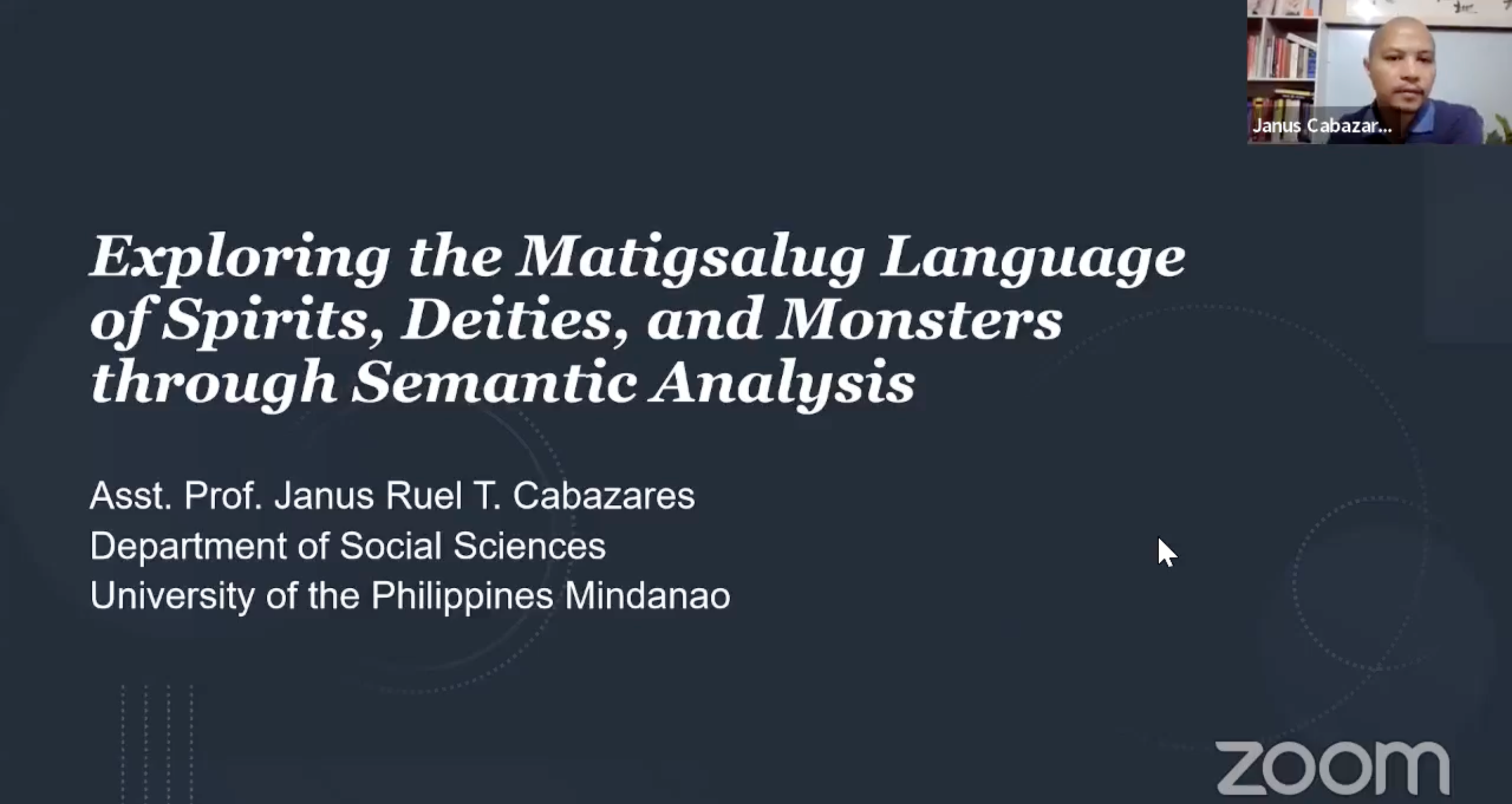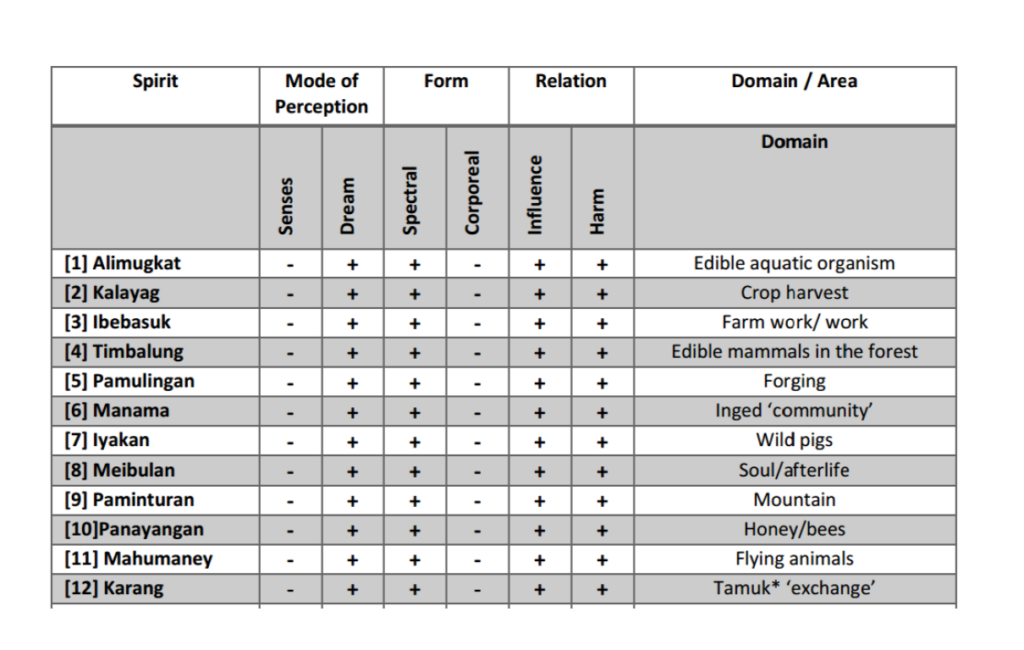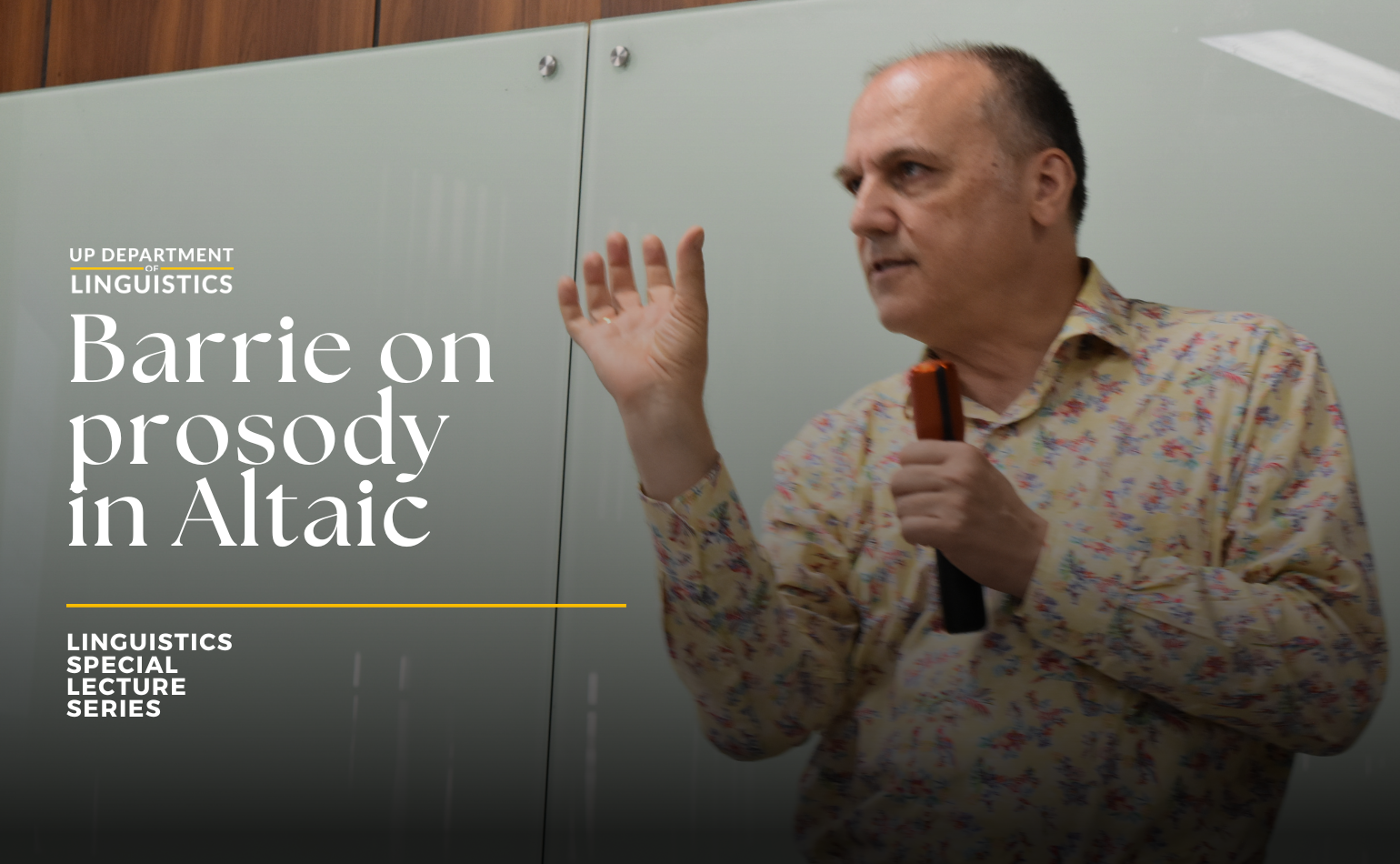
Asst. Prof. Janus Ruel T. Cabazares (UP Mindanao), an alumnus of the MA Linguistics program, was invited to talk about his research on Matigsalug spirit names for the ninth installment of the 2023 Philippine Indigenous Languages Lecture Series (PILLS). The webinar was livestreamed on the Department’s Facebook page last October 16.
Matigsalug belongs to the Manobo language family, and is said to be closely related to Ata and Tigwa. It has an increasing user population of 50,000 in 2010 (SIL, 2010), with speakers residing across different regions in Mindanao, specifically Northern Mindanao, Davao, and SOCCSKSARGEN. For this study, speakers from Marilog and Datu Salumay in Davao City were interviewed regarding their knowledge and usage of spirit names. Asst. Prof. Cabazares mentioned that he has been collaborating with Matigsalug communities for around 16–17 years, meeting them for the first time during his undergraduate years.
Instrumental to this study is a preliminary dictionary being developed by the Matigsalug Christian Association where Cabazares came across an interesting category of words: spirit names which were capitalized and considered proper names. Aside from names, he also elicited nouns, verbs, and adjectives related to activities involving spirits. After giving a brief background on the study of names and its being rooted in the philosophical tradition, he remarked that “Spirit names are unlike the names of individual persons only known to a specific group of people.”
Cabazares employed cognitive linguistics in his research, a framework that uses language as a tool for organizing, processing, and conveying information from interactions with the world. Cognitive linguistics is concerned with structured categories and the concepts encapsulated within these, closely associated with what Evans and Green (2006) consider “patterns of conceptualization.” Additionally, within this framework, meaning and semantic analysis are treated as encyclopedic and perspectival.

He then presented his analysis based on several semantic features. First, spirits can be classified based on how they can be perceived (i.e. kita ‘see,’ rineg ‘hear,’ taheinep ‘dream’). The alimugkat ‘spirit of aquatic resources’ and karang ‘spirit of tamuk exchange,’ for example, cannot be perceived through sight, unlike the mentiyanak ‘malevolent infant spirit.’ Second, in terms of form, spirits can either be spectral or corporeal. Their form, by extension, dictates their locomotive activities (i.e. whether they can antew ‘fly,’ panew ‘walk,’ and/or layang ‘fly’). Consultants explained that kalayag ‘spirit of harvest’ does not walk, while tiktik ‘bird-like malevolent spirit’ flies. Lastly, spirits either bulig ‘help’ or aldek ‘scare’ (or negatively affect) humans, as well as influence their activities. Kalayag, for instance, can provide a good harvest to the Matigsalug farmers.
Apart from features, this research is also interested in describing sentences and the roles played by constituents. Particular lexical items evoking frames were identified, some of which are [enter], [placing], [assistance], [cause harm], [communicative act], [perceive an experience], and [request deity]. Sentences exhibiting certain frames show the roles fulfilled both by the spirits and the human participants. For example, [enter] involves a spirit entering a person’s body, while [assistance] portrays the former as a helper and the latter as a beneficiary.
He concluded his lecture by stating that “The semantic features of spirit names are the patterns of collocations with verbs which can describe their conceptualization as “entities.” Each spirit name is distinctively defined by its domain (environmental or behavioral) and form. Concepts of spirits point to their role in human activity particularly its social dimension. Concepts of spirits arise in how particular social interactions and those between the Matigsalug and their environment are realized.”

Viewers, including colleagues from the Department, raised follow-up questions regarding the study’s methodology, the basis for choosing frames, the demographic of interviewees, and the prospective correlation of spirit names with the Matigsalug’s claims to ancestral domains. Suggestions and other related areas of exploration were also identified during the open forum.
This lecture is based on Asst. Prof. Cabazares’ MA thesis. Many thanks to Sir Janus for sharing his work on Matigsalug spirit names.
Published by Patricia Anne Asuncion



